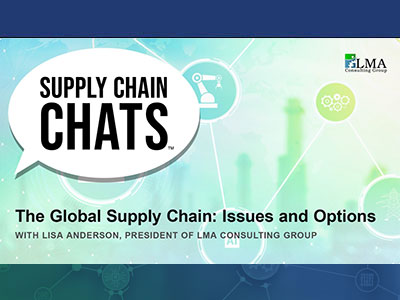In this episode of Supply Chain Chats, Lisa Anderson talks about the state of affairs in the global supply chain. From the drought impacting container ship capacity in the Panama Canal to the Iran-backed Houthi rebels attacking container ships in the Suez Canal to the Chinese aggression towards Taiwan and ships passing in the South China Seas, risks are increasing across the global supply chain. Because of these supply chain chokepoints, companies are paying extra fees to get to the front of the line, diverting cargo around the southern tip of Africa and finding new routes such as Northern China to the West Coast ports combined with rail or trucks across the U.S. to the East Coast. Thus, companies are searching for backups and alternatives so that they can ensure reliable supply for their customers and manufacturing operations. Regional manufacturing is gaining momentum across the board. The U.S. and Mexico are attractive alternatives to supplying North America customers since they can produce to scale. For example, in the medical device and pharmaceutical industry, manufacturing hubs are popping up in the U.S., Mexico, Costa Rica and Puerto Rico. And SIOP (Sales Inventory Operations Planning) is an increasingly popular process to drive supply chain realignment and related critical decisions such as insourcing, reallocating manufacturing and supply chain capacity, etc.



